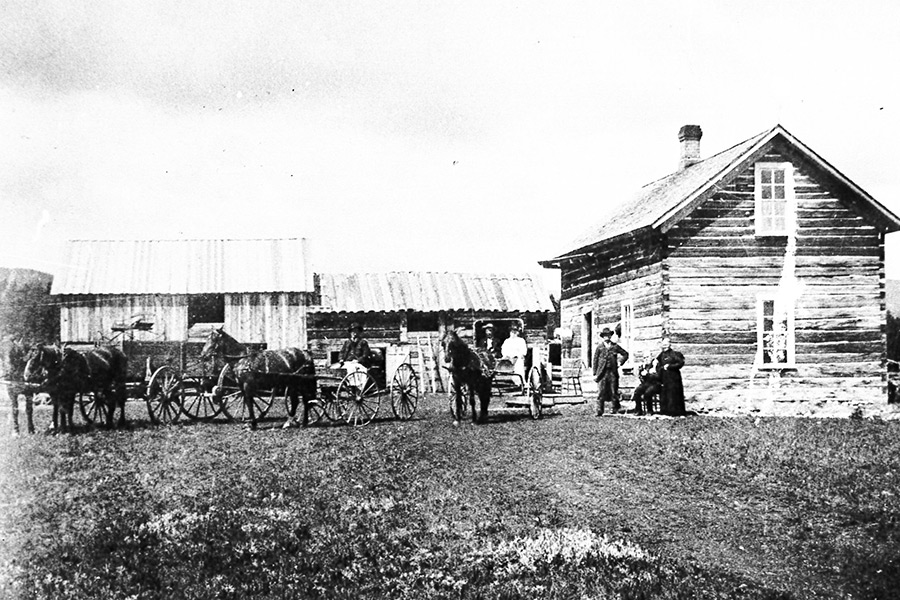In 1864, when Montana was recognized as a new frontier territory, the conflicting currents of western expansionism surged across a landscape glittering with gold, bristling with teepees and mining camps, and populated with outlaws and secessionists
Settlers and miners were drawn to the region’s potential for gold while the Lincoln administration, eager to secure it for the United States, recognized the influx of Confederate sympathizers, whose influence would prevent Montana from achieving statehood for another 25 years.
The region held immense promise while facing an uncertain future, and while much of it remained the wild and untrammeled landscape it had been for thousands of years, the immediate focus on resource extraction, the Civil War and the push of white Americans into Indian lands laid the groundwork for what is now crystallized as the 150-year history of Montana Territory and the American West.
In May 1864, when President Abraham Lincoln signed it into law, Montana became the newest United States territory. Since then, the population has increased from 80,000 residents to more than 1 million, and roads, cities, industry and agriculture have left their mark on the land.
And yet, much of Montana and the progressive, independent, and interwoven philosophies of its residents have gone unchanged, and create a tapestry of the nation’s spirit of expansionism.
“Many Montanans – and visitors to the state – see Montana as an enduring monument to our pioneering past. I often hear out-of-state visitors share the thought that Montana is what America once was,” said Ken Egan, Jr., author of “Montana 1864: Indians, Emigrants, and gold in the Territorial Year,” published by Riverbend Publishing to commemorate the 150th anniversary of Montana’s territorial status.
Among the characters who turned up in Montana in 1864, and who populate Egan’s new book observing the territorial milestone – Montana wouldn’t achieve statehood until 1889 – are frontierswoman Calamity Jane, Native American war leader Crazy Horse, vigilante sheriff and outlaw Henry Plummer, and Crow chief and visionary leader Plenty Coups.
Egan explained that, while many aspects of Montana have undergone a transformation – the transfer of tribal lands to American property and the impact of industry on the landscape among the most profound – others have remained relatively unchanged.
“Montanans still love the land with an almost religious zeal,” Egan explained.
But the region’s potential to mine natural resources was the primary draw, not only for fortune seekers scouring the landscape for seams of gold and other minerals, but for those who looked to take advantage of the mining camps and boomtowns cropping up by “mining the miners,” as Egan puts it – that is, to sell goods and services to the gold seekers and their families.
Aaron Parrett is a professor at the University of Great Falls and the author of “Montana: Then and Now,” which compares where Montana started and where it is today.
One of the fascinating themes in researching the book, he said, emerged as he tracked Montana’s economic history of resource extraction to its current confluence, which trends toward conservation as a way to promote tourism.
“When you look at the history of Montana, it really is a history of resource exploitation,” Parrett said. “Before you had gold you had beavers, and by the time Lewis and Clark were headed back they were already meeting trappers who were exploiting that resource.”
Then came mining and prospecting in Bannack, located near what today is Dillon and which served as the territory’s capital briefly in 1864, before the capital was moved to Virginia City.
Parrett continued: “But all of those industries are really hard on the environment, especially coal, oil, copper and gold. You can only take those resources once. Whereas with tourism, that is an infinite resource, but ironically it hinges on preserving and not touching the other stuff. When these guys first arrived, there was no oversight. They could pollute with impunity and the resources were basically theirs for the taking. Today, the second leading economic driver in the state is tourism, and it’s poised to become No. 1. I call it catch and release capitalism. You are endlessly cycling people through the state, and tourist dollars stay in Montana, whereas money from resource extraction ends up back East in the pockets of investors.”
Montana’s ethnic diversity has also changed, Parrett said, noting that in 1870 almost 20 percent of Helena’s population was Chinese, and more African Americans lived in Montana than any surrounding states or territories.
Mixed-race marriages were common, though they were banned between 1909 and 1953 with the exception of Native Americans, since white settlers had been raising families with Montana’s first residents from the beginning.
Today, however, only four states are less diverse than Montana.
Parrett said a key reason behind the prohibition on mixed-race marriages was the territory’s pro-Confederate leanings early on.
“The government didn’t want Montana to go into statehood as a Confederate state, but to be recognized we had to have a constitution,” he said. “As part of their Confederate leanings they passed a bunch of legislation that was prejudicial, bigoted and racist, like prohibiting marriage between whites and the Chinese.”
He noted that one of Montana’s more progressive moments in its history was the 1972 Constitutional Convention, which revised the state’s outmoded constitution.
